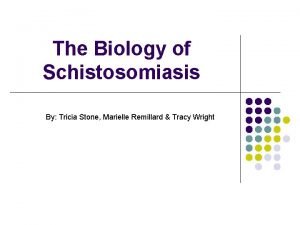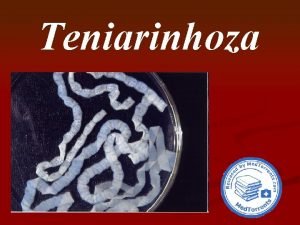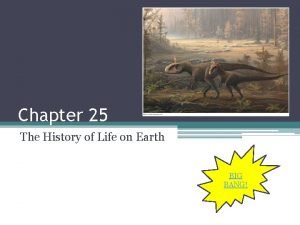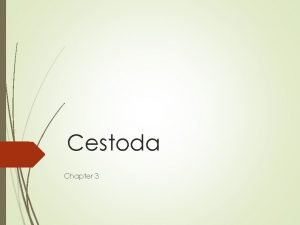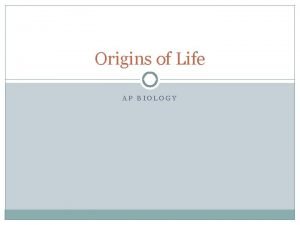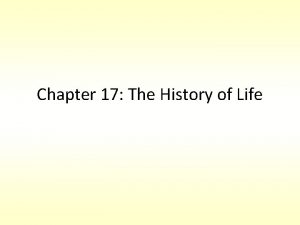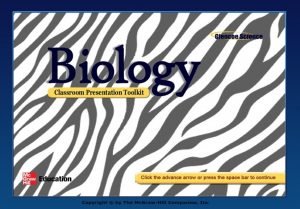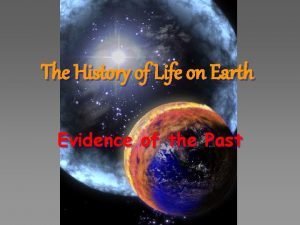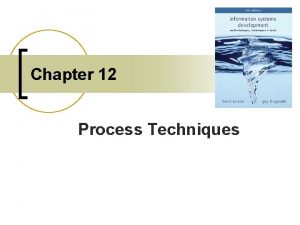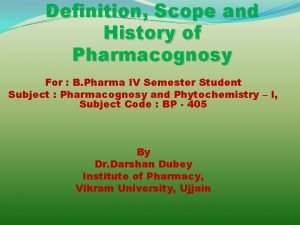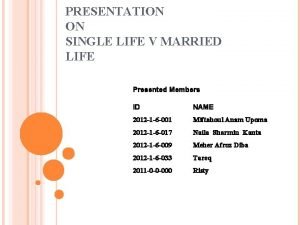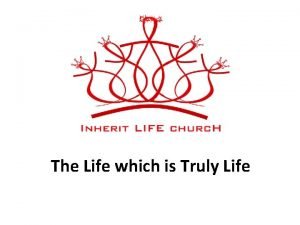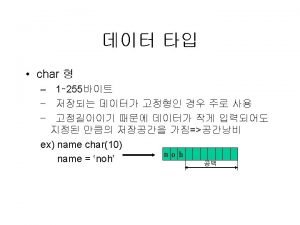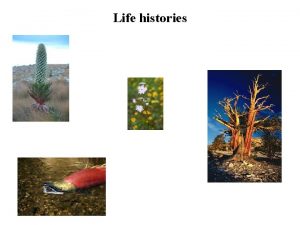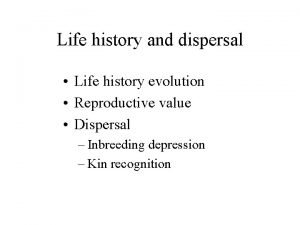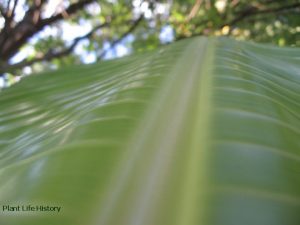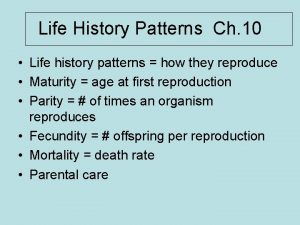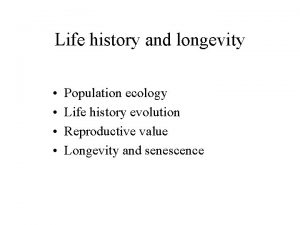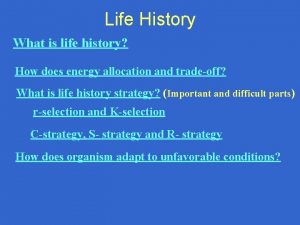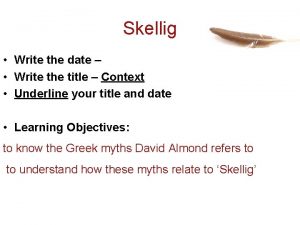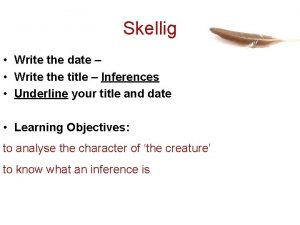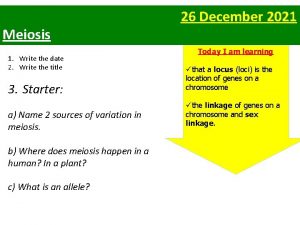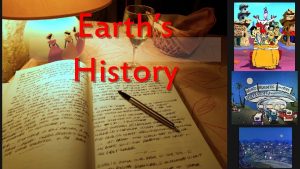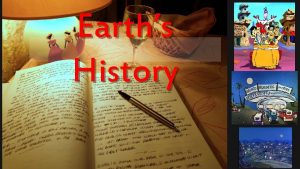The History of Life write the date write


















































































- Slides: 82

The History of Life -write the date -write the question -write your answer SS – BIOLOGY 1. How old is the Earth? Make the best guess you can if you don’t know. 2. How do we know? What evidence is there of this? 1. A How did science answer this question? 2. 3. 4. B C D

History of LIFE Evidence of Change & Origins of Life Chapter 14 Geological Time Scale

Earth’s Early History: Geologic Time Scale – evidences ? – • Living things have altered the earth's oceans, land surfaces, and atmosphere. For example: – photosynthetic organisms are responsible for the oxygen that makes up about a fifth of the earth's atmosphere. – The rapid accumulation of atmospheric oxygen about 2 billion years ago led to the evolution of more structured eukaryotic cells, which in turn gave rise to multicellular plants and animals.

Some words… to box up time • Eon • Era • Period • Epoch • Age

The History of Life The Geologic Time Scale § The geological time scale is a model that expresses the major geological and biological events in Earth’s history. § The geologic time scale is divided into the Precambrian time and the Phanerozoic eon. § Eras of the Phanerozoic eon include the Paleozoic, Mesozoic, and Cenozoic eras. § Each era is divided into one or more periods.

• The Phanerozoic Eon spans 542 million years and is typically subdivided into three eras: – Paleozoic Era: 542 to 251 million years ago. – Mesozoic Era: 251 to 65 million years ago. – Cenozoic Era: 65 million years ago to present.

The History of Life Precambrian § Nearly 90 percent of Earth’s entire history, stretching from the formation of Earth to the beginning of the Paleozoic era about 542 million years ago § Autotrophic prokaryotes enriched the atmosphere with oxygen.

The History of Life The Paleozoic Era § The ancestors of most major animal groups diversified in what scientists call the Cambrian explosion. § Life in the oceans continued to evolve at the end of the Cambrian period. § Fish, land plants, and insects appeared during the Ordovician and Silurian periods. § The first tetrapods emerged in the Devonian.

The History of Life § A mass extinction ended the Paleozoic era at the end of the Permian period. § Between 60 and 75 percent of the species alive went extinct.

The History of Life The Mesozoic Era § Mammals and dinosaurs first appeared late in the Triassic period, and flowering plants evolved from nonflowering plants. § Birds evolved from a group of predatory dinosaurs in the middle of the Jurassic period. § About 65 million years ago, a meteorite struck Earth.


The History of Life The Cenozoic Era § Mammals became the dominant land animals. § After the mass extinction at the end of the Mesozoic era, mammals of all kinds began to diversify.

MESOZOIC CENOZOIC

Phanerozoic Eon

Precambrian Time

Phanerozoic Eon § The geologic time scale is divided into the Precambrian time and the Phanerozoic eon. § Eras of the Phanerozoic eon include the Paleozoic, Mesozoic, and Cenozoic eras.

Paleozoic Era Precambrian = Precursor to the Phanerozoic Eon -Paleozoic Era Cambrian Ordovician M. Ex Silurian Devonian M. Ex Carboniferous Permian M. Ex -Mesozoic Era Triassic M. Ex Jurassic Cretaceous M. Ex. -Cenozoic Era Paleogene Neogene

Cambrian Period

Ordovician period #1 MASS EXTINCTION

Silurian

Devonian #2 MASS EXTINCTION

Carboniferous period

Permian period #3 MASS EXTINCTION

Mesozoic Precambrian = Precursor to the Phanerozoic Eon -Paleozoic Era Cambrian Ordovician M. Ex Silurian Devonian M. Ex ? ? ? Carboniferous Permian M. Ex -Mesozoic Era Triassic M. Ex Jurassic Cretaceous M. Ex. -Cenozoic Era Paleogene Neogene

Triassic Period #4 MASS EXTINCTION

TIME - 135 MYA, Late Jurassic

Cretaceous period

TIME - 76 - 68 MYA, Late Cretaceous period. #5 MASS EXTINCTION

Cenozoic Era Precambrian = Precursor to the Phanerozoic Eon -Paleozoic Era Cambrian Ordovician M. Ex Silurian Devonian M. Ex Carboniferous Permian M. Ex -Mesozoic Era Triassic -Cenozoic Era Paleogene M. Ex Jurassic Cretaceous M. Ex. -Cenozoic Era Paleogene Neogene Paleocene Eocene Oligocene Miocene Pleistocene Holocene

Oligocene Epoch

Pleistocene Epoch

Pleistocene

HINT Following instructions requires you to read them all the way through. Geological Timeline • Using receipt paper make a geological timeline. • In Groups of 4 students • Complete the handout • Avoid COMMON ERRORs in scaling… Scaling…. MYA = Million Years Ago • • • 50 MYA = 0. 05 Billion Years Ago (BYA) = 5 cm 200 MYA = 0. 2 BYA = 0. 20 m = 20 cm 10 MYA = 0. 01 BYA = 0. 01 m = 1 cm 1000 MYA = 1 BYA = 1 m = 100 cm 4600 MYA = 4. 6 BYA = ? _____? m *Clarification: Data Table Kingdoms -- fill out table *(Use Table on pg. 502) -- place all pictures on timeline in their correct place

Geological Timeline • COMMON ERROR – Scaling…. MYA = Million Years Ago • 50 MYA = 0. 05 Billion Years Ago (BYA) = 5 cm • 200 MYA = 0. 2 BYA = 0. 20 m = 20 cm • 4600 MYA = 4. 6 BYA = ? _____? m • 5 th Extinction NOT on the table: HINT Following instructions requires you to read them all the way through. – The Triassic–Jurassic extinction event marks the boundary between the Triassic and Jurassic periods, 201. 3 million years ago, [1] and is one of the major extinction events of the Phanerozoic eon, profoundly affecting life on land in the oceans. In the seas, a whole class (conodonts) and 34% of marine genera disappeared. On land, all pseudosuchians (non- dinosaurian archosaurs) other than crocodylomorphs (Sphenosuchia and Crocodyliformes), some remaining therapsids, and many of the large amphibians became extinct. *Clarification: Table – only 8 spaces and many pictures -- fill out table *(Use Table on pg. 502) -- place all pictures on timeline in their place


Exploratory Lab: Making a Timeline of Life on Earth #1 Analyze – a new scale – 25 segments… 24 hours – 0000 = 5 BYA is 24 hours ago; today is 2400 – 1 segment = 20 cm = 200 million years = 1 hour • How many hours since the earth formed (4600 MYA)? – Now answer 1 a. – 1 c. #5 (Time Humans have existed) --------divided by--------- X 100 = % of time (Time that life has existed)

Avoid COMMON ERRORs in scaling… Scaling…. MYA = Million Years Ago • • • 50 MYA = 0. 05 Billion Years Ago (BYA) = 5 cm 200 MYA = 0. 2 BYA = 0. 20 m = 20 cm 10 MYA = 0. 01 BYA = 0. 01 m = 1 cm 1000 MYA = 1 BYA = 1 m = 100 cm 4600 MYA = 4. 6 BYA = ? _____? m

Timelines…What’s the point? • Geological Timescale = Evolutionary Timeline • Have you realized how loooooong the evolutionary timescale is? How long did it take for single cell organisms to evolve into multicellular organisms? How long have mammals been around?

The History of Life Use what you already know…MATCH THEM UP!


Chapter 14 The History of Life Fossils = Evidence of Change Which layers are oldest? Newest? Dating fossils § Relative dating is a method used to determine the age of rocks by comparing them with those in other layers.

Fig. 13 -4 g

Radiometric Dating Watch this…it’s GOOD! How we know how old the earth is? Video – 3: 19

The History of Life Radiometric Dating § Uses the decay of radioactive isotopes to measure the age of a rock LIMITATION… § Radioactive isotopes that can be used for radiometric dating are found only in igneous or metamorphic rocks.

Origin of Life? Darwin did not address the question of the Origin of Life…only the origin of species.

Spontaneous Generation…?

Francis Redi - 1668 Lewis Pasteur – 1850 s Spontaneous Generation Replaced by Theory of Biogenesis: Life comes from life…

Simple Organic Molecules…a possible first step towards life. 1953 –Miller-Urey *Formed an amino acid in simulated pre-cambrian earth conditions = Primordial Soup Possible AA Protein Hypothesis =-Amino-acids bound to clay Other theories? - meteors brought the first life form - Formation of complex molecules on crystals? ? ?

“Expelled” - Ben Stein Origins of Life Segment 4 min. Mr. Hill’s opinion: Science should not be threatened by the very real “We don’t know yet” answer.

First Cells… 3. 5 billion years ago Stromatolites Cyanobacteria – primitive photosynthesizing prokaryotes

The Move: Prokaryotes Eukaryotes 1. 8 billion years ago *Take an evolutionary perspective: 1. What are the main differences between pro- and Eu- ? 2. Are they advantageous? How? (Increase fitness) 3. How did these evolve? Hypotheses? N C M

Membrane Infolding Theory

Lynn Margulis 1966 Endosymbiont Theory 4. 5 Min. - mt. DNA


Review/Summary of Cellular Evolution

Study / Review Links Life Begins: Crash Course Big History #4 – this chapter’s content from a HISTORY perspective. (14 minutes) The History of Life on Earth - Crash Course Ecology #1 - – this chapter’s content from an ECOLOGY perspective. (14 minutes) Textbook Ch 14 Study Guide Answers Quizlet Terms/Concepts from CH 14 Practice

The History of Life -write the date -write the question -write your answer SS – BIOLOGY 1. How old is the Earth? Make the best guess you can if you don’t know. 2. How do we know? What evidence is there of this? 1. A How did science answer this question? 2. 3. 4. B C D

SS – BIO • Bonus: The _____ was an era dominated by the dinosaurs A. Paleozoic B. Mesozoic C. Precambrian D. Cenozoic 1. 2. Which is the OLDEST?

SS – BIO Do you find it so hard to say no that you often end up doing things you really don’t want to? Why or why not?

SS – BIO If you knew there was no chance to fail, what job would you choose?

SS – BIO A ___? ____ is any preserved evidence of an organism.

The History of Life Smart. STARTER What gas do scientists think was absent from Earth’s early atmosphere? A. sulfur B. nitrogen C. oxygen D. water vapor 1. 2. 3. 4. A B C D


The History of Life SS – BIO According to the endosymbiont theory, what may have happened to a prokaryotic cell that entered a host cell? A. It was digested by the host cell. B. It became an organelle in the host cell. C. It became a harmful parasite in the host cell. D. It was removed from the host cell by exocytosis. 1. 2. 3. 4. A B C D

Formative Assessment 15 Questions….

Chapter 14 The History of Life Chapter Diagnostic Questions Which is an example of theory of spontaneous generation? A. Tadpoles become frogs. B. A starfish can grow from a severed arm. C. Damp hay and corn create mice. D. From a tiny acorn, an oak can grow. 1. 2. 3. 4. A B C D

Chapter 14 The History of Life Chapter Diagnostic Questions What gas do scientists think was absent from Earth’s early atmosphere? A. sulfur B. nitrogen C. oxygen D. water vapor 1. 2. 3. 4. A B C D

Chapter 14 The History of Life Chapter Diagnostic Questions In which period did the first land vertebrates appear? A. Cambrian B. Devonian C. Triassic D. Mesozoic 1. 2. 3. 4. A B C D

Chapter 14 The History of Life 14. 1 Formative Questions In which type of rock do paleontologists search for fossils? A. igneous B. metamorphic C. sedimentary D. volcanic 1. 2. 3. 4. A B C D

Chapter 14 The History of Life 14. 1 Formative Questions Which dating method determines the age of rocks by comparing them to rocks in other layers? A. absolute dating B. geological dating C. relative dating D. sedimentary dating 1. 2. 3. 4. A B C D

Chapter 14 The History of Life 14. 1 Formative Questions Which geological change during the Mesozoic era had the greatest effect in shaping the course of evolution? A. B. C. D. plate tectonics extensive glaciation increased volcanic activity meteorite impact 1. 2. 3. 4. A B C D

Chapter 14 The History of Life 14. 2 Formative Questions At one time people believed that mold growing on a piece of cheese was created by the cheese. This is the idea of _____. A. biogenesis B. transgenesis C. primordial generation D. spontaneous generation 1. 2. 3. 4. A B C D

Chapter 14 The History of Life 14. 2 Formative Questions According to the endosymbiont theory, what may have happened to a prokaryotic cell that entered a host cell? A. It was digested by the host cell. B. It became an organelle in the host cell. C. It became a harmful parasite in the host cell. D. It was removed from the host cell by exocytosis. 1. 2. 3. 4. A B C D

Chapter 14 The History of Life 14. 2 Formative Questions An ancient prokaryote containing photosynthetic pigments that was engulfed by a host cell may have become a _____. A. chloroplast B. lysosome C. centriole D. ribosome 1. 2. 3. 4. A B C D

Chapter 14 The History of Life Chapter Assessment Questions Which is the half-life of the radioactive isotope shown in the graph? A. B. C. D. 18 years 36 years 54 years 72 years 1. 2. 3. 4. A B C D

Chapter 14 The History of Life Chapter Assessment Questions Study the graph. Determine the age of a rock if it contained 40% C-14. A. B. C. D. 2, 857. 5 years 7, 576 years 11, 460 years 5, 730 years 1. 2. 3. 4. A B C D

Chapter 14 The History of Life Standardized Test Practice Which factor made it unlikely that life existed on Earth 4 billion years ago? A. absence of oxygen B. absence of food C. intense heat D. intense sunlight 1. 2. 3. 4. A B C D

Chapter 14 The History of Life Standardized Test Practice For which fossil might a paleontologist most likely use carbon-14 to determine its age? A. fossilized microbes in volcanic rock B. dinosaur footprints found in sedimentary rock C. marine fossils found in a deep sedimentary layer D. a woolly mammoth frozen in a glacier since the last Ice Age 1. 2. 3. 4. A B C D

Chapter 14 The History of Life Standardized Test Practice Beryllium-10 (Be-10) has a half life of about 1. 5 million years. If a sample is analyzed and determined to contain ¼ of the original Be 10, what is the age of the sample? A. 750, 000 years B. 3 million years C. 4. 5 million years D. 6 million years 1. 2. 3. 4. A B C D

Chapter 14 The History of Life Standardized Test Practice Which provides the best evidence that a meteorite struck the earth 65 million years ago? A. a large crater that was found B. a layer containing high levels of iridium C. the sudden appearance of mammals D. the sudden disappearance of dinosaurs 1. 2. 3. 4. A B C D

Chapter 14 The History of Life Standardized Test Practice In this experiment using water and the gases to simulate Earth’s early atmosphere, which was not one of the final products? A. B. C. D. amino acids nucleotides RNA molecules sugar molecules 1. 2. 3. 4. A B C D

Chapter 14 The History of Life Standardized Test Practice Why do scientists believe that archea are the closest relatives to Earth’s first cells? A. They are eukaryotes. B. They contain DNA. C. They carry out photosynthesis. D. They live in extreme environments. 1. 2. 3. 4. A B C D
 Record date dividends
Record date dividends Record date for dividend
Record date for dividend How to write date in american style
How to write date in american style History also history physical
History also history physical Hát kết hợp bộ gõ cơ thể
Hát kết hợp bộ gõ cơ thể Bổ thể
Bổ thể Tỉ lệ cơ thể trẻ em
Tỉ lệ cơ thể trẻ em Voi kéo gỗ như thế nào
Voi kéo gỗ như thế nào Tư thế worm breton
Tư thế worm breton Hát lên người ơi alleluia
Hát lên người ơi alleluia Môn thể thao bắt đầu bằng chữ đua
Môn thể thao bắt đầu bằng chữ đua Thế nào là hệ số cao nhất
Thế nào là hệ số cao nhất Các châu lục và đại dương trên thế giới
Các châu lục và đại dương trên thế giới Công thức tính thế năng
Công thức tính thế năng Trời xanh đây là của chúng ta thể thơ
Trời xanh đây là của chúng ta thể thơ Mật thư anh em như thể tay chân
Mật thư anh em như thể tay chân Phép trừ bù
Phép trừ bù độ dài liên kết
độ dài liên kết Các châu lục và đại dương trên thế giới
Các châu lục và đại dương trên thế giới Thơ thất ngôn tứ tuyệt đường luật
Thơ thất ngôn tứ tuyệt đường luật Quá trình desamine hóa có thể tạo ra
Quá trình desamine hóa có thể tạo ra Một số thể thơ truyền thống
Một số thể thơ truyền thống Cái miệng nó xinh thế chỉ nói điều hay thôi
Cái miệng nó xinh thế chỉ nói điều hay thôi Vẽ hình chiếu vuông góc của vật thể sau
Vẽ hình chiếu vuông góc của vật thể sau Biện pháp chống mỏi cơ
Biện pháp chống mỏi cơ đặc điểm cơ thể của người tối cổ
đặc điểm cơ thể của người tối cổ V cc
V cc Vẽ hình chiếu đứng bằng cạnh của vật thể
Vẽ hình chiếu đứng bằng cạnh của vật thể Vẽ hình chiếu vuông góc của vật thể sau
Vẽ hình chiếu vuông góc của vật thể sau Thẻ vin
Thẻ vin đại từ thay thế
đại từ thay thế điện thế nghỉ
điện thế nghỉ Tư thế ngồi viết
Tư thế ngồi viết Diễn thế sinh thái là
Diễn thế sinh thái là Dạng đột biến một nhiễm là
Dạng đột biến một nhiễm là Bảng số nguyên tố lớn hơn 1000
Bảng số nguyên tố lớn hơn 1000 Tư thế ngồi viết
Tư thế ngồi viết Lời thề hippocrates
Lời thề hippocrates Thiếu nhi thế giới liên hoan
Thiếu nhi thế giới liên hoan ưu thế lai là gì
ưu thế lai là gì Sự nuôi và dạy con của hổ
Sự nuôi và dạy con của hổ Khi nào hổ con có thể sống độc lập
Khi nào hổ con có thể sống độc lập Sơ đồ cơ thể người
Sơ đồ cơ thể người Từ ngữ thể hiện lòng nhân hậu
Từ ngữ thể hiện lòng nhân hậu Thế nào là mạng điện lắp đặt kiểu nổi
Thế nào là mạng điện lắp đặt kiểu nổi The prophet's last sermon
The prophet's last sermon History of software development life cycle
History of software development life cycle Examples of a dystopian society in real life
Examples of a dystopian society in real life Schistosomes
Schistosomes Taenia saginata phylum
Taenia saginata phylum Equilibrial life history
Equilibrial life history Discovery education
Discovery education Cestode
Cestode Entity life history
Entity life history History of life on earth
History of life on earth Section 17-4 patterns of evolution
Section 17-4 patterns of evolution Life history
Life history The history of life section 1 fossil evidence of change
The history of life section 1 fossil evidence of change Tuzo wilson
Tuzo wilson Mahatma gandhi life story
Mahatma gandhi life story Folklore subgenres
Folklore subgenres Entity life history
Entity life history Leq essay example ap world
Leq essay example ap world How to write a dbq ap world
How to write a dbq ap world History and development of pharmacognosy
History and development of pharmacognosy 4 mark question history
4 mark question history How to write a thesis for ap world history
How to write a thesis for ap world history How to saq ap world
How to saq ap world Higher history essay example
Higher history essay example City and country life vocabulary
City and country life vocabulary Farm life vs city life
Farm life vs city life Daily life polynomials in real life
Daily life polynomials in real life Benefits of arranged marriage
Benefits of arranged marriage Life orientation skills
Life orientation skills Country life vs city life compare /contrast
Country life vs city life compare /contrast City life vs country life
City life vs country life Life of pi moral lesson
Life of pi moral lesson Boundaries meme
Boundaries meme The life that is truly life
The life that is truly life John needham experiment main idea
John needham experiment main idea Unit 8 country life and city life
Unit 8 country life and city life Karakteristik write through didalam write policy
Karakteristik write through didalam write policy
















































